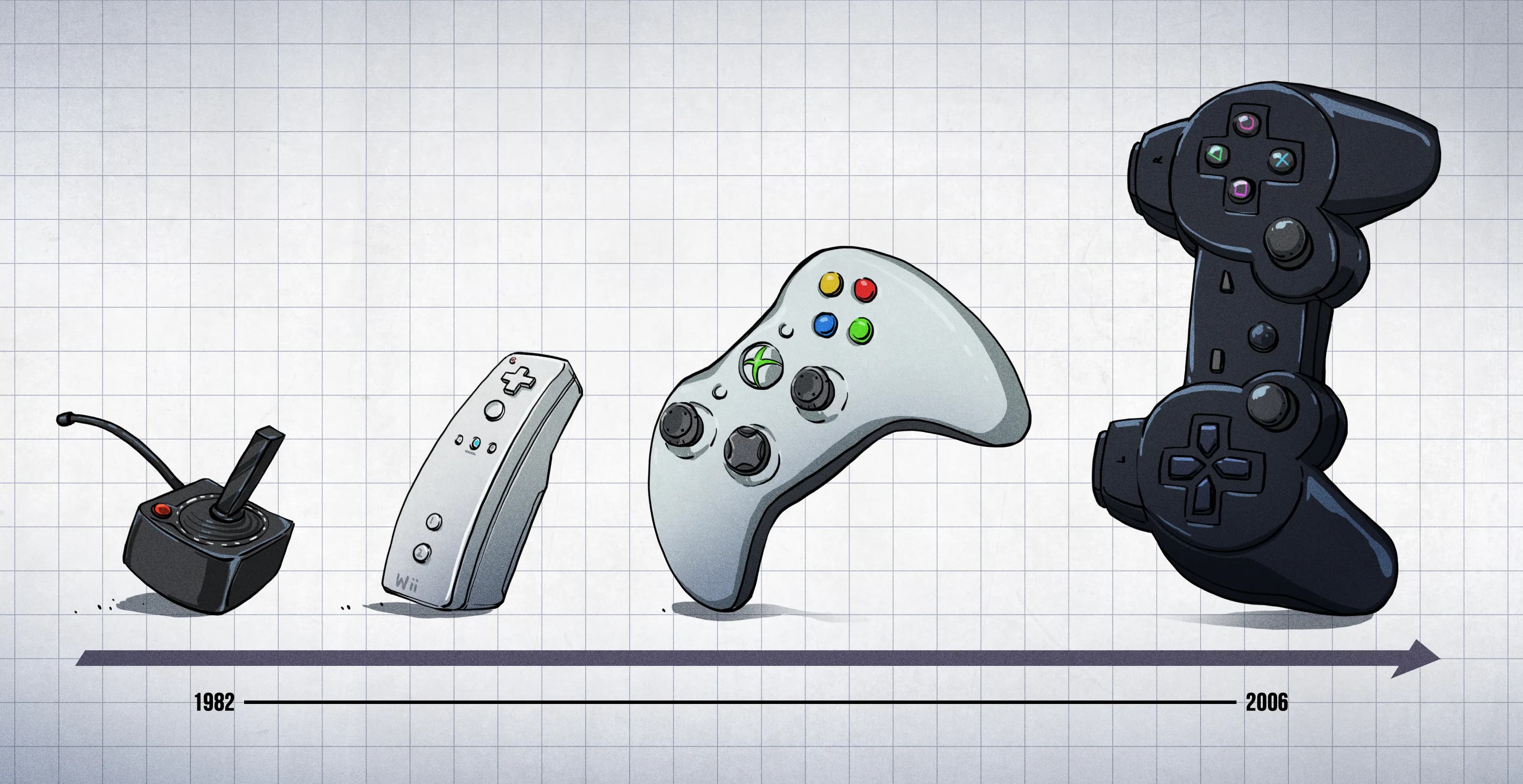The Early Days
The journey of gaming peripherals began in the late 1970s, a time when the gaming industry itself was still in its infancy. The first popular gaming devices were simple analog joysticks and paddle controllers, designed to interact with early home consoles like the Atari 2600 and Pong machines. These devices were straightforward, often consisting of just a stick or a wheel to move an on-screen object left or right. These basic input devices may seem primitive by today’s standards, but they were revolutionary at the time. They introduced players to a new level of interactivity, allowing them to control on-screen action for the first time. The tactile feedback of turning a paddle or moving a joystick became the norm, and it wasn’t long before these devices evolved. As the gaming industry grew, so did the need for more precision and flexibility in gameplay. This led to the creation of multi-button controllers, setting the stage for future innovations. Despite their simplicity, these peripherals laid the essential groundwork for what would become a multi-billion-dollar industry. They sparked the imagination of both gamers and developers, paving the way for the more sophisticated devices we know today.
The PC Gaming Revolution
The 1990s marked a turning point for gaming peripherals, particularly for PC gaming. As personal computers became more powerful and gaming shifted beyond consoles, the demand for precision and customization led to the rise of dedicated gaming mice and mechanical keyboards. Companies like Logitech, Microsoft, and emerging brands like Razer saw an opportunity to create peripherals designed specifically for competitive gaming. One of the key innovations during this time was the transition from traditional ball mice to optical sensors. Early ball mice required frequent cleaning and lacked precision, making them unreliable for fast-paced gaming. The introduction of optical and later laser sensors dramatically improved accuracy, allowing for smoother and more responsive cursor movements. This advancement was crucial for genres like first-person shooters (FPS) and real-time strategy (RTS) games, where split-second reactions could mean victory or defeat. At the same time, mechanical keyboards started gaining traction among gamers. Unlike membrane keyboards, which had a mushy feel, mechanical keyboards featured individual switches beneath each key, providing tactile feedback and faster response times. This made them ideal for games requiring rapid key presses, such as fighting games and massively multiplayer online (MMO) titles. Companies like Cherry MX developed various switch types catering to different playstyles, from linear and quiet switches to loud and clicky ones favored by competitive gamers. Peripheral manufacturers also began introducing additional customization options, such as programmable buttons, macro support, and adjustable DPI (dots per inch) settings for mice. These features allowed gamers to fine-tune their hardware to their specific preferences, giving them an edge in competitive play. Logitech’s MX series and Razer’s Boomslang, released in the late ‘90s, were among the first gaming mice to integrate such advanced features. The 1990s set the foundation for modern gaming peripherals, transforming them from simple input devices into essential tools for performance and competitive play. This era was just the beginning of a revolution that would lead to even more innovations in the years to come.
"The introduction of optical sensors in mice completely transformed precision gaming experiences." - Tech Hardware Weekly

Key Milestones
- 1982: First optical mouse prototype
- 1996: Introduction of force feedback
- 2004: RGB lighting becomes mainstream
- 2018: Widespread adoption of wireless tech
Modern Innovations
Today's peripherals feature advanced technologies like...


